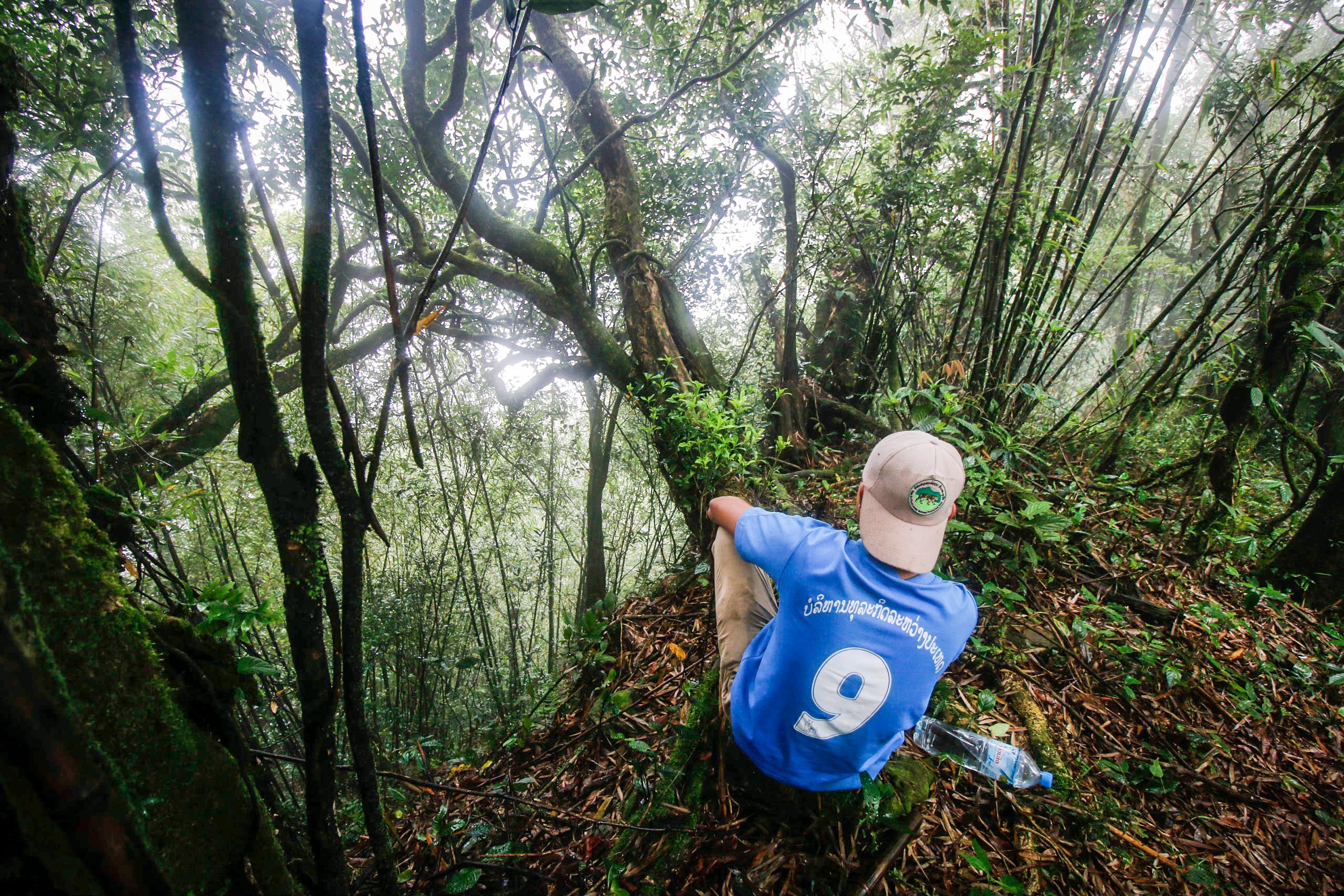The WCS Lao PDR Program is focusing its efforts on protecting one of the world’s most important areas for biodiversity, the Greater Northern Annamites (GNA), as well as a key wetland area in the south. Home to unique wild habitats and endemic species, these areas support the livelihoods of several million people and are increasingly threatened by human-induced processes. To counter this, WCS Lao PDR focusses on protecting wild places in three landscapes:
The Greater Annamites has the highest concentration of endemic species for a continental area in the world and is ranked as one of the world’s 200 most important bioregions. The area also has some of Southeast Asia’s most charismatic species including tiger and Asian elephant. Protecting a contiguous area from north to south of the Greater Annamites, which includes a natural elevation gradient, is extremely important for the survival of the area’s flora and fauna as species seek out climate refuge.
The wetlands of Xe Champhone in Savannakhet harbor Laos’ last Siamese Crocodiles. The wetlands are increasingly threatened by unsustainable fishing practices, fragmentation, and conversion through agricultural intensification. Critical habitat degradation continues, despite their proven importance for biodiversity and livelihoods.
Fast Facts
- The GNA as a whole contains 134 mammal species and over 500 species of birds.
- WCS Global Priority Species that occur in the GNA include the Indochinese tiger and the Asian elephant.
- There are several rare, endemic, and lesser-known species that only in recent years have become known to science, such as the critically endangered Saola (Pseudoryx nghetinhensis) and large-antlered muntjac (Muntiacus vuquanghensis), Annamite muntjac (Muntiacus truongsonensis) and the Annamite striped rabbit (Nesolagus timminsii).
- Three of the world’s most endangered primates inhabit the GNA, which are the white-cheeked crested gibbon (Nomascus leucogenys), red-shanked douc langur (Pygathrix nemaeus), and Phares langur (Trachypithecus phayrei).
- Several hundred bird species occur in the GNA including the spectacular crested Argus (Rheinardia ocellata), and the newly described limestone warbler (Phylloscopus calciatilis) and bald-headed bulbul (Pycnonotus Hualon).

Above: Summit of Phou Louey, 'Forever Mountain', in Nam Et-Phou Louey NP
Conservation Challenges
The principal threat to the flora and fauna of Lao PDR is the unregulated over-harvesting of animals and plants, largely for trade and to a lesser degree for subsistence. The reasons for the broader illegal trade in wildlife products are myriad and include:
- strong cultural beliefs held in Laos and the region about wildlife’s medicinal benefits and culinary superiority;
- increasing personal income;
- lack of awareness of the health risks of eating wildlife and of the importance of protecting biodiversity;
- greater road access to rural areas;
- the cross-boundary flow of commerce and people; and
- a low prioritizing of illegal wildlife interdiction for public sector funding, staff and action.
Habitat loss, the second major threat, is driven by pioneering shifting cultivation, logging for timber and the unprecedented rate of conversion of natural forests for cash crops, plantations and large-scale commercial projects such as hydropower and mining.
Climate change and increased risk of emerging diseases are emerging issues that will place additional stress on these already fragile and unique wildlife communities.
Compounding the complexity of threats is the lack of proper population studies of many of the country's endangered species, such as Saola and white-cheeked gibbon, to provide protected area managers with the information necessary to craft appropriate conservation strategies.
Conservation Approach
Addressing such impacts requires a holistic approach that engages government institutions, the private sector, and civil society to develop win-win offset programs that create sustainable financing for conservation and natural resource management which minimizes impacts on biodiversity while supporting innovative, on-the-ground activities such as:
- community-based sustainable resource use systems for long-term food security,
- participatory boundary demarcation to enable ownership of natural resources in managed-use areas,
- incentive-based law enforcement that rewards local people and park staff for demonstrated anti-wildlife trade action, and
- direct payments for ecosystem services such as wildlife-based tourism.
Find out more
The WCS Mekong Drivers Partnership is an initiative that does this not only in the Lao landscapes, but also in Cambodia and Myanmar, bringing together governments, communities, and the private sector at multiple scales to eliminate the threats that are driving this loss of biodiversity and habitat, and to protect the natural resources people depend upon.